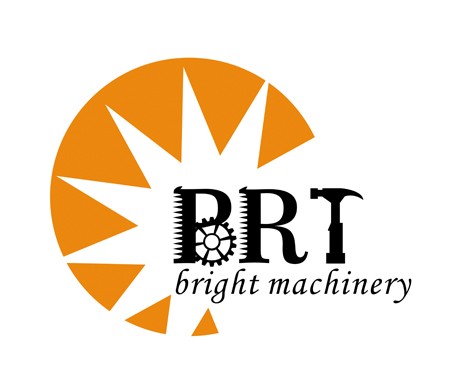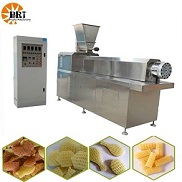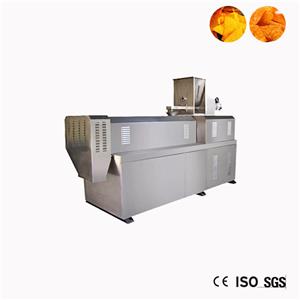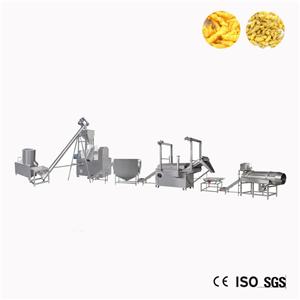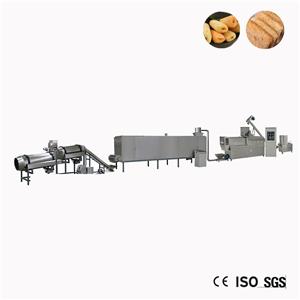The Difference Between Extruder Production of Sinking Feed And Floating Feed - Expansion Coefficient
The Difference Between Extruder Production of Sinking Feed And Floating Feed - Expansion Coefficient
In the aquatic feed industry, extruders are widely used. The reason is that the materials produced by extruders are diverse and their maturity is higher than that of pelletizers, which causes much less environmental pollution. Many manufacturers generally Only floating materials are produced. Things to note when using an extruder to produce submersible materials:
1. Formula: When designing the formula, it should be noted that the starch content should be low but not absent. Generally speaking, it should be greater than 10% and less than 20%. Generally, around 15% is better. The lack of starch affects the water resistance of the pellets, and the dust in the finished product increases, which affects the appearance of the pellets. In addition, the formula of the sinking material is designed so that the fat content is higher than that of the floating material, usually between 5-5. 8%. Furthermore, plant-based raw materials are easier to puff than animal-based raw materials.
2. Template: The opening rate of the sinking material template is more than 40% higher than that of the floating material. The reason is that the pressure difference between the pressure in the extruder and the atmospheric pressure is smaller when producing the sinking material, so the puffing rate is smaller. , and the aspect ratio is larger than that of floating materials, generally around 1:1.8.
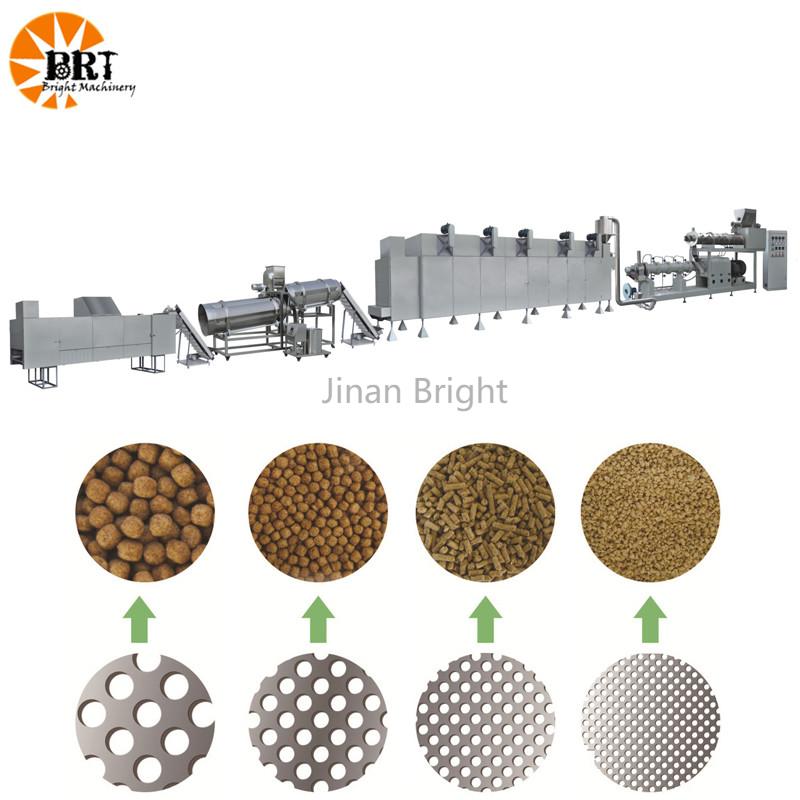
3. Screw configuration: When producing sinking materials, attention should be paid to the configuration of the extruder screw. It is different from the configuration of floating materials. It requires the material to stay in the cavity for a short time (the same equipment, compared with floating materials, floating materials (30-35 seconds for the material and 20-30 seconds for the sinking material). Moreover, the shearing force should be small and the discharge temperature should be relatively low. Therefore, when making the sinking material, the discharging end screw cannot use a slotted screw and the puffing should be as much as possible. The pressure relief port on the cavity is opened; the other is to change the screw behind the kneading piece (in the direction of the discharge port) to face the discharge end steeply, so that the material can be quickly discharged from the mold.
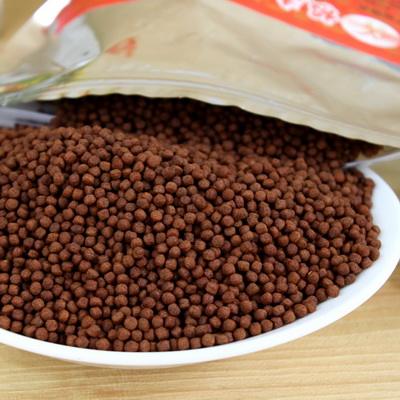
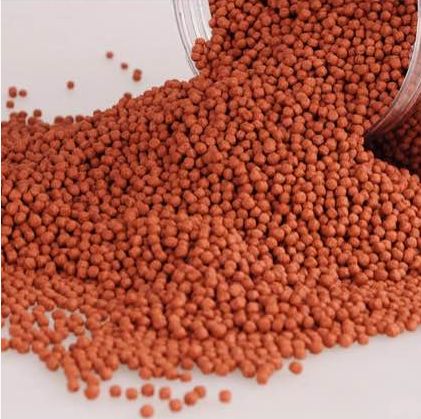
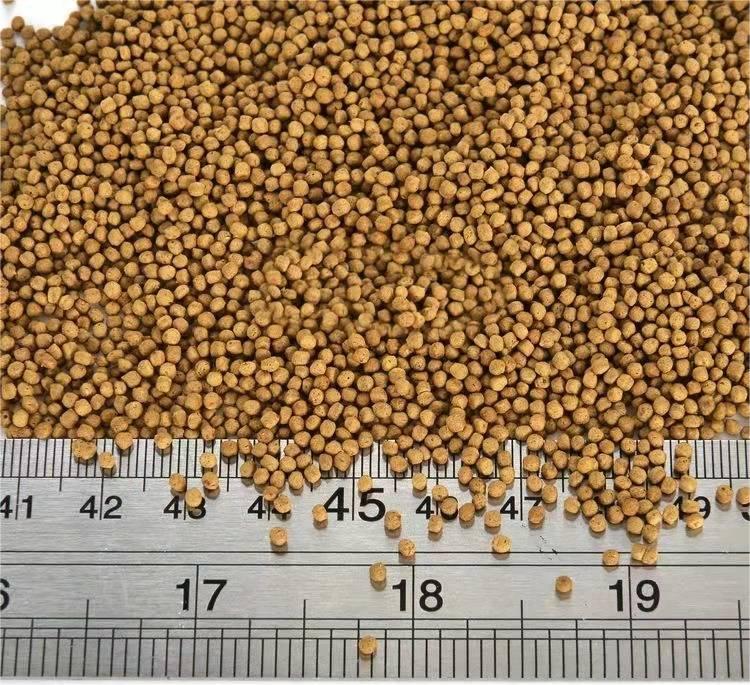
4. Moisture control: When producing sinking materials, the amount of water added in the conditioner should be more than that of floating materials (floating materials leaving the conditioner are generally around 25%, sinking materials are generally around 28%), and there are 2-3% tap water can be appropriately added into the puffing chamber, which is more conducive to the production of sinking materials.
5. Control of conditioning temperature: Generally speaking, there is not much difference between the temperature of the conditioner for the production of floating materials and the production of sinking materials. They are both above 90°C, which is conducive to the starch ripening of the materials (the aging of sinking materials is generally 70-85%, floating material is 80-95%), but for some formulas of sinking materials, the conditioner temperature cannot be increased to 90°C due to design reasons, but can only be around 60-80°C. In this case, the conditioner temperature can be If the water addition amount of the conditioner is reduced and the water addition amount of the expansion chamber is increased, the conditioning temperature may be increased.
6. Host speed: The speed of the main shaft of sinking material is generally 250-400r/min (for equipment that can be adjusted, such as twin-screws; single-screw extruders generally do not have speed-adjusting equipment, and their speed is generally around 350 r/min. ). The higher the speed of the equipment, the higher the shear force, and the higher the mechanical energy absorbed by the feed.
7. Dryer control: Many operators believe that the higher the temperature of the dryer, the better it can dry the materials. However, when producing heavy materials, one must pay attention to the secondary ripening of the materials, that is, if the materials are discharged When the temperature of the extruder (such as 80°C) is lower than the temperature of the oven (120°C), the starch in the granules will be matured again, so that the granules will sink at the outlet of the extruder and float after drying. Also, if the temperature of the oven is too high, the moisture content of the particles will be uneven (particle surface and core). Therefore, the dryer control principle when drying the sedimentation material is low temperature and slow drying. The drying temperature is controlled at around 100°C. It is best to Within 90℃, and the belt speed is as slow as possible (40-60 minutes).
The expansion range of the floating material of the extruder is 1.5-2.1 times. Sinking materials basically do not expand, with an expansion degree of 1.0-1.3. That is to say, the size of the finished product is one expansion range larger than the die hole.
